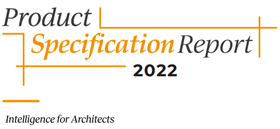
What challenges are facing architects today when it comes to product specification? And what can manufacturers do to help? Building Design spoke to over 300 architects to find out, including Colin Rice from Cullinan Studio

A sustainable philosophy of connecting people and nature is at the heart of Cullinan Studio’s work and is exemplified in projects like the Bunhill 2 Energy Centre in north London, which is reusing waste heat from London Underground tunnels to warm homes. Building Design spoke to partner Colin Rice.
What are the issues currently impacting on specification and how are these changing?
There are two main drivers for rapid change. The first is the climate crisis and our need to work with, persuade and help clients to deliver net zero carbon buildings. A subset of that is working with existing buildings.
The second is around the consequences from the Grenfell Tower fire and the need to have the so- called “golden thread” of information, with specification data being part of the information about an asset.
Are any design trends having an impact - if so, what?
They are related to the drivers. We have a new job where it is part of the client’s brief to try and work to circular economy principles. I did a small project where I followed that as far as I could.
But in a more significant project, how does that work in practice?
We’re doing the obvious things like talking to Cleveland Steel to look at reusing steel from its supplies, and to a supplier of second-hand timber in Essex about using greenheart piles as material for the roof structure.
That in turn raises the bigger question of whether we start with the materials and design around what’s available, or do what we’ve traditionally done. If we’re going to work to circular economy principles, we’ll have to have a keener ear to the ground about what’s available. The idea of material passports is a good one.
”If we’re going to work to circular economy principles, we’ll have to have a keener ear to the ground about what’s available. The idea of material passports is a good one.”
How are you responding to these specification challenges?
Around climate change more broadly, using natural materials and using materials with lower embodied carbon. To do that you need good information about the products or materials as well as the environmental product declarations (EPDs).
On fire, it is really difficult. We have a long tradition of using timber in our buildings and would like touse more, because it is a more sustainable material. We are working on a low-rise housing scheme where, as a condition of its funding, we can’t use any combustible materials in the external wall, which goes beyond Building Regulations. That prevents us from using timber in the construction and closes down an option we should be looking at.
Where do you turn for information on product specification issues?
We use a mixture of sources, including NBS Source and the BRE Green Guide to Specification, and do quite a bit of Googling. We also rely on a network of sustainable sources, including the Alliance for Sustainable Building Products, and firms like Mike Wye.
What are the issues or topics where specification knowledge is lacking?
It’s the areas where products don’t have EPDs.
For example, we’re looking at improving the acoustics of the canal level of our studio. Ten years ago, when we moved into the building, we added acoustic insulation to the top floor, which was partially made from recycled PET. Now we’re trying to reduce plastic so we’re looking at a Somerset sheep’s wool-based product. But they don’t yet have an EPD.
And how could manufacturers help?
The new Construction Products Association Code for Construction Product Information looks to have a good aim, in trying to put information in a way that is clear, unambiguous and allows for comparison.
What product developments would you like to see to ease some of these challenges?
The ideal would be to have low embodied carbon materials that are non-combustible, but that’s not likely. What we also need is a more realistic regulatory environment on how you manage risk in design, rather than the present blanket approach of saying you can or can’t use a material.
Postscript
Request a comprehensive breakdown of the data that has been released in Building Design’s Product Specification Report 2022 here.
















No comments yet